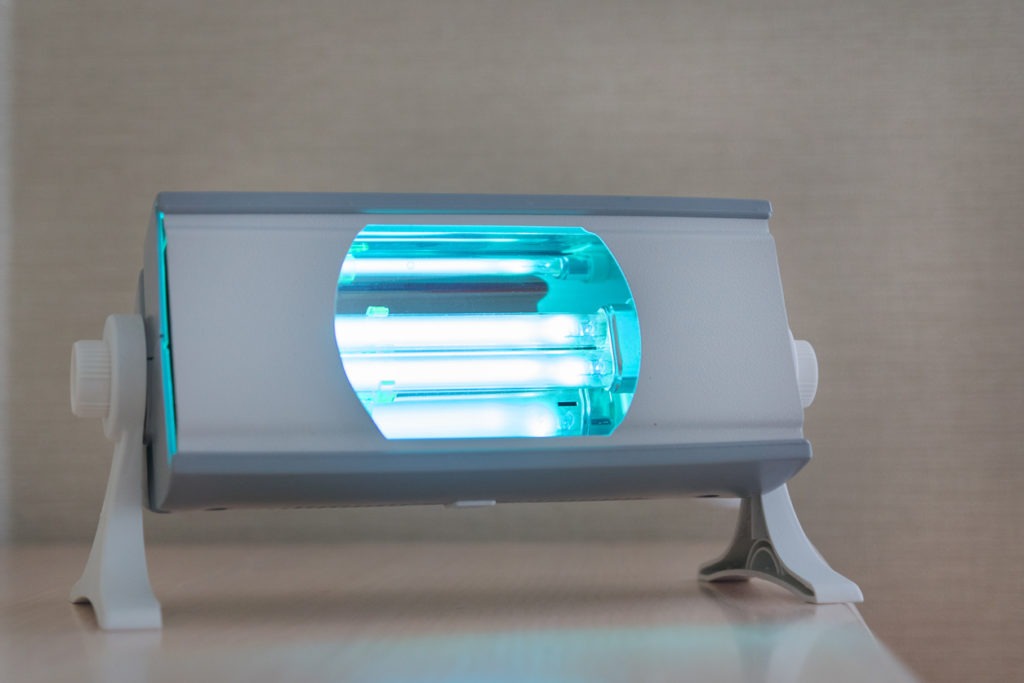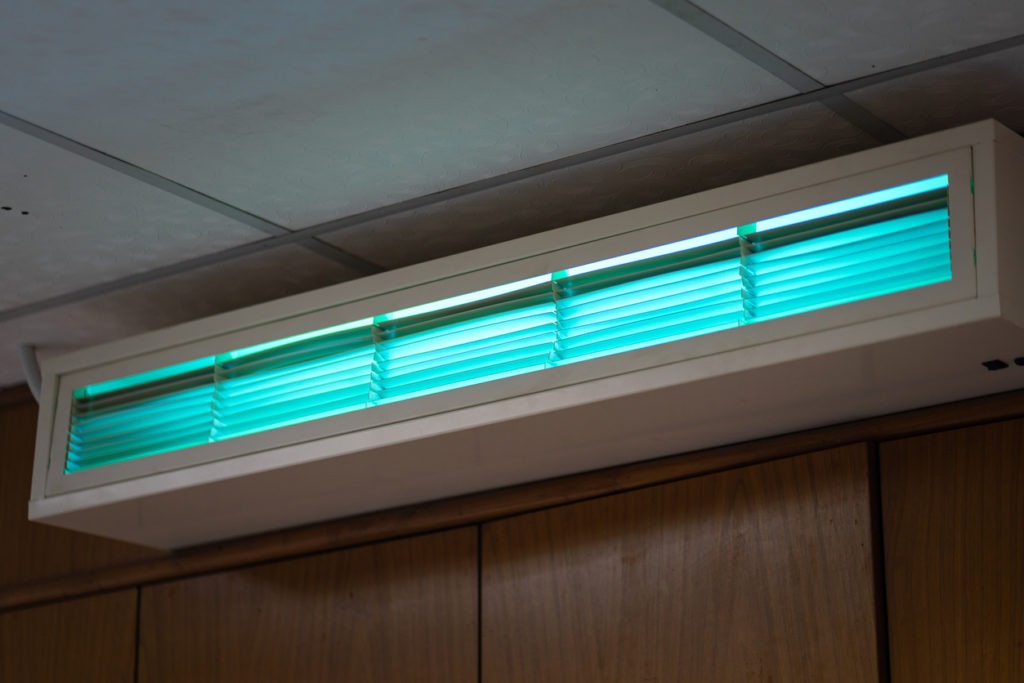Companies and households alike are searching for ways to make common places safer and cleaner. As a potential remedy, some customers and product makers are turning to ultraviolet, or UV light — especially, UVC light, which has extra-short wavelengths and enough energy to damage the DNA and RNA of organic organisms, so preventing them from reproducing.
UVC light has a long history as a proven disinfectant in locations such as hospitals and laboratories, and in 2020, businesses such as airlines, hotels, and retail establishments have relied on the invisible light more than ever. The Coronavirus pandemic also spawned an avalanche of inexpensive, unregulated, consumer-facing gadgets for use in the home, such as handheld wands that allow you to wave UVC light across surfaces and things.
What are UV rays?
Ultraviolet (UV) light, which reaches Earth via the sun and the electromagnetic spectrum, comes in three primary varieties: UV-A is between 315 and 400 nanometers, UV-B is between 280 and 315 nanometers, and UV-C is between 100 and 280 nanometers.
According to Shen, these three forms of UV radiation differ in their biological activity and their ability to permeate the skin.
Ultraviolet light has been a trusted ally in the area of disinfection for over a century. UV-C carries the highest energy capable of breaking the DNA and RNA links of viruses and bacteria, hence rendering them ineffective. The same radiation that disinfects can also cause eye and skin damage and cancer.
UVA vs. UVB vs. UVC Rays
It is essential to differentiate between the many forms of UV radiation. The efficiency of UVA versus UVB versus UVC rays in viruses will vary.
According to the Food and Drug Administration, UVA or UVB radiation (such as those from the sun) are not as effective as UVC rays. UVA and UVB rays are also more dangerous to humans, as extended exposure can cause skin damage, aging, and cancer risks (which is why physicians usually advocate using sunscreen).
UV sanitizers employing UVC rays are currently the best option for inactivating pathogens.
How do UV disinfectants operate?
The most effective UV sanitizers utilize direct UV rays to eliminate germs and bacteria. Regarding the use of UV light against the coronavirus, the FDA states that UV light swiftly destroys the outer protein coating of the virus, rendering the virus ineffective.
UV sanitizers include UV sanitizing wands, sanitizing cases, and UVC lamps (commonly referred to as “germicidal” lamps). The type of UV sanitizer you select depends depend on what you’re attempting to disinfect and the available space. You can use either a UV wand or a UV case or pouch to sanitize an object. Other, more potent UV sanitizers just require proximity to a surface or item in order to disinfect it. Below are some of the most effective UV sanitizing equipment.
As discussed previously, an effective UV sanitizer will only function when exposed to direct sunlight. Therefore, UVC radiation can only deactivate a virus if the virus is exposed directly to the UV rays. The efficiency of a UV sanitizer is also dependent on the device’s dose and time. According to the FDA, the majority of UVC lamps offered for household use have a low dose, therefore it may take longer exposure to a given surface area for bacteria or viruses to be inactivated.
Considerations in Using a UV Sanitizing Wand
UVGI, or ultraviolet germicidal irradiation, is a disinfection technique that uses ultraviolet light with a short wavelength (UV-C) to inactivate or destroy bacteria and diseases. UVGI is the application of ultraviolet light with suitably short wavelengths to disinfect surfaces, air, and water. Here you may learn more about UVGI.
There are a variety of lamp and fixture options for UVGI. The UV sanitizing wand is one of the most popular on the Internet. As previously stated, the commercial fixtures and transportable units that emit germicidal UV-C light and kill 99.9% of infections when used appropriately have been clinically evaluated, proving their efficacy. Independent investigations conducted by the CDC and others have also confirmed efficacy. Even if the wand you wish to purchase has been professionally evaluated, wands do not and cannot account for your particular area; they are “solutions” that fit all. The issue is that not all spaces are the same size, do not contain the same materials, etc. Despite the fact that a wand may clean your phone adequately (this is true), it cannot automatically disinfect a full hospital operating room. Effective units and fixtures are selected and installed with your exact disinfection needs and the size of your space in mind in order to apply the appropriate level and power of UV lighting. For instance, a larger space may require the installation of five fixtures. Even if you precisely employ a single wand throughout the region, it will not be sufficient.
When using germicidal UV-C lighting, the light’s intensity and distance from the surface or material to be sterilized are other crucial considerations. There are too many opportunities for human mistake to ensure the usefulness of a wand. What if one user holds it one foot away from the surface and another holds it three inches away? Furthermore, even if the disinfection wand’s instructions instruct you to hold it one foot away from the surface you’re disinfecting, are you going to measure one-foot every time you disinfect? Are you planning to hold this wand at exactly one foot during the duration of the disinfection cycle? This is an example of what we refer to as human error.
Steps On How to Use Your UV Antivirus Light Securely
Prepare – Ensure that the area to be sanitized is clean and dry. Detach all electrical appliances from their sockets. Remove all flammable substances. Turn off all lights in the examination room. The location must be as dark as possible for UV light to effectively expose microorganisms.
Vacate – To ensure their safety, remove plants, animals, and humans from the room prior to sterilization.
Equip – When handling, the operator should wear dark sunglasses and protective gloves for enhanced protection. To guarantee safety, DO NOT gaze directly into a bright UV light during sterilization.
Set – Place the UV lamp in the area’s middle for optimal coverage. Depending on the size of the region, UV light disinfectant application times vary. Depending on the size of your room, the ideal sterilizing duration is between 15 and 45 minutes. Configure the built-in timer and/or the remote control so that the UV light turns on after you leave the room.
Caution – Do not touch or gaze directly at the UV Light when it is on. It is not recommended to stare directly at any UV source, regardless of distance.
Wait – After the UV light timer has been turned off, the operator must wait at least 15 minutes before entering the room. Ensure that windows and doors are open to bring in fresh air. Wait 30 minutes before allowing air to enter the room.
Storage – After 30 minutes, the operator may re-enter the room. Keep the UV light out of the reach of youngsters and animals. DO NOT touch the UV bulb directly; only touch the surrounding plastic/metal components.
Enjoy – Bring plants, animals, and humans back indoors. Enjoy your newly sanitized room! After the device has cooled down, you may use the same UV light in another room. UV light should be used no more than twice a month to sterilize a regular dwelling with low exposure to harmful microorganisms.
To summarize
UV sterilization is an important and rapidly expanding method for avoiding the spread of healthcare-associated illnesses (HAIs). UV sterilization is without a doubt highly effective at destroying infectious bacteria, viruses, and fungi, despite the fact that you may have questions about what it is and what it can accomplish for your healthcare institution.
UV sterilization creates a clean environment and is an extremely effective disinfectant, but it can be difficult to choose which UV sterilization system is ideal for your institution. This article will help you understand what elements to consider when comparing devices, as well as which device would safeguard your personnel and patients the most effectively.
You may also read our Guide to Making Natural Home Cleaning Products if you are looking for more cleaning products for your home.



